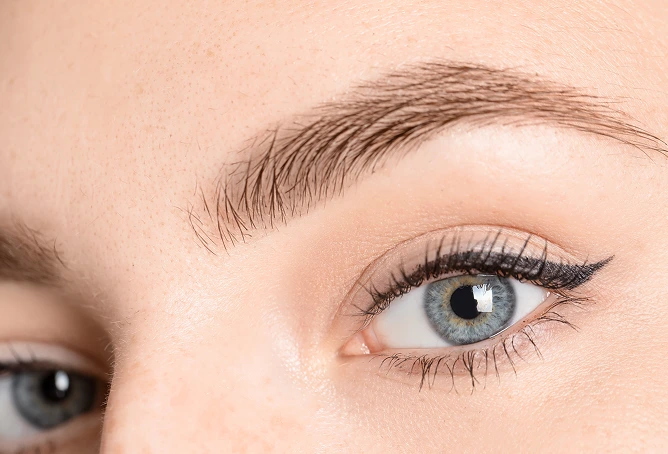-

Our Transplant Solutions
-

Our Transplant Solutions
At NE Hair, we offer advanced female hair transplantation solutions specifically for those experiencing thinning or advanced hair loss. Whether it’s caused by genetics, stress, hormonal changes, or a combination of factors, it can be deeply upsetting for females to lose their hair. The good news is that through advances in medicine, fuller, natural-looking hair can be restored.
At the helm of this revolution is Dr. Ryan Welter, a hair restoration pioneer with a 20+ year background. He incorporates state-of-the-art methods such as microFUE™ along with revolutionary cellular therapies in order to provide superior outcomes. Our goal is to assist every woman in restoring their hair and confidence.
At NE Hair, we offer advanced female hair transplantation solutions specifically for those experiencing thinning or advanced hair loss. Whether it’s caused by genetics, stress, hormonal changes, or a combination of factors, it can be deeply upsetting for females to lose their hair. The good news is that through advances in medicine, fuller, natural-looking hair can be restored.At the helm of this revolution is Dr. Ryan Welter, a hair restoration pioneer with a 20+ year background. He incorporates state-of-the-art methods such as microFUE™ along with revolutionary cellular therapies in order to provide superior outcomes. Our goal is to assist every woman in restoring their hair and confidence.
Table of Contents

Hair transplantation is a surgical process that replenishes hair to bald spots or thinning spots by transplanting hair follicles from a donor area (back or sides of the head) to hair loss areas. Dr. Welter performs hair transplants using sophisticated methods like microFUE™ (Follicular Unit Extraction). It enables him to precisely remove individual follicular units and place them with less scarring and natural outcomes.
This procedure is particularly useful for women with diffuse thinning, receding hairlines, or bald spots caused by hormonal changes, heredity, or aging. Hair transplants don’t halt subsequent hair loss. They do, however, restore hair permanently where follicles are successfully transplanted. Often, the surgery can be supplemented with regenerative treatments to enhance healing and increase hair density.
Follicular Unit Extraction (FUE) is a minimally invasive procedure that differs from FUT. Rather than removing a strip of scalp to harvest follicles, our surgeon uses a small punch tool to individually extract them from donor sites. This means there are no linear incisions, which also translates to less scarring and downtime overall. Nonetheless, tackling larger areas might take longer and be split over several sessions.
MicroFUE™ takes FUE a step further. Tiny tools, usually under 1mm wide, gather grafts with more precision than ever before, causing minimal harm to nearby tissues. It is perfect for the patient who expects results so natural that even up close, no one will suspect a thing (or two). This makes the technique perfect for those seeking very natural-looking results who have exacting aesthetic standards or need work on their hairline and eyebrows (for example). On top of this, microFUE™ has minimal downtime and almost no scarring.

During the initial appointment, Dr. Welter evaluates the patients’ scalp health to choose the most suitable hair growth treatment. He uses cutting-edge imaging and scalp assessments to pinpoint which areas of the head have good-quality donor hair. In addition, he analyzes which areas need treatment because they are balding or thinning. Dr. Welter also considers patients’ lifestyle choices, medical histories, and any drugs they are taking that could affect surgery. At this point, he provides a price for a patient’s individualized plan. He might also suggest other non-surgical hair therapies that can help encourage healing after transplants.
With the use of microFUE™ technology, he meticulously removes individual hair follicles from donor sites. They are then creatively implanted into areas where hair is thinning or balding. So they grow in the same way nature intended.

Many women get a brow transplant along with a hair transplant to bolster facial symmetry and fuller, better-defined eyebrows. The surgery includes transplanting thin hair follicles—usually from the scalp—into the brow zone to rebuild lost density or redefine the shape. Regardless of whether thinning brows result from aging, extensive over-plucking, or heredity, a brow transplant can provide a natural, long-term outcome. When combined with a hair transplant, it provides a harmonious, youthful result. Recovery is fairly short, and the outcome is long-term, particularly if selected to complement the patient’s natural face shape.
In the initial week following the procedure, small scabs will develop around each transplanted follicle. These will simply flake off by themselves 7-10 days later. We recommend that patients sleep with their heads elevated and steer clear of vigorous physical activities, direct sunlight onto the scalp, and any sort of hair treatment. For most women, it is possible to go back to work within 2-5 days.
Hair that is transplanted usually sheds within 2-4 weeks because it is part of its regular growth cycle. However, around three or four months after the surgery, new hair will start to grow back. Patients should be able to see a difference within six months and the final results one year later. With proper care, the results are permanent and natural-looking.

Hair transplant procedures are intended for women who are experiencing thinning hair or hair loss and want to restore natural density and volume. Suitable candidates are normally in good overall health, know their hair restoration goals, and are willing to stick to the recovery process. The following are some other indications:
The most prevalent cause of hair transplantation is a condition known as androgenetic alopecia, or female baldness, in which thinning most frequently occurs in the crown area of the scalp. This procedure can help slow the hair loss process.
Any sudden shedding or active thinning caused by underlying medical issues is a contraindication for the procedure, as results will not be visible.
The most favorable candidates are women who possess good hair growth on the back of the head or sides of the scalp, since these regions are considered donor sites.
The scalp must be free of infection, inflammation, or scarring that may disrupt the process of transplantation.
Smoking affects healing and hair growth, so candidates should be non-smokers or willing to quit in the weeks before and after the procedure.
For those with thinning hair or bald spots, hair transplantation can restore natural volume and density. This procedure is particularly useful for women looking to achieve the appearance of fuller, healthier hair – especially along the part line and at the crown or hairline, which can be areas of concern as they start to lose more strands.
If a patient takes care of them, results of this kind tend to last much longer than those from temporary measures, such as lotions or wigs. These newly grafted strands are resistant to the hormone responsible for hair loss; hence, they should continue to grow permanently.
The cost of a women’s hair transplant in Boston, MA, typically ranges from $6,000 to $15,000. The cost comprises the surgeon’s fee, anesthesia, facility charges, and aftercare. It depends on how much hair a patient has lost and the number of grafts needed – as well as whether we use FUE, FUT, or microFUE™. Sometimes, we may suggest further treatments like PRP therapy or stem cell-based enhancements. This could also influence the price. For a precise figure and customized treatment plan, book an appointment to see Dr. Ryan Welter for a consultation.
At NE Hair, women are provided with personalized attention in a modern facility overseen by Dr. Ryan Welter. Using cutting-edge methods such as microFUE™, Dr. Welter—one of the world’s most experienced hair transplant surgeons—produces results that are not only natural-looking and long-lasting but often surpass expectations. Each treatment plan is tailored to the patient, ensuring outcomes can be predicted—and frequently improved upon. Our aim is to help restore both a patient’s hair and their confidence in the friendliest yet most expert care possible.
